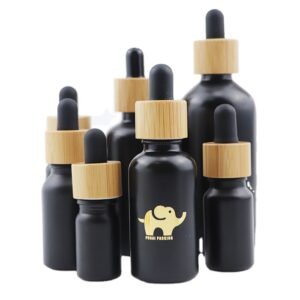Building a brand from start to finish is a demanding task. Whether you’re creating a new brand for a new business, designing a new brand after a merge, or rebranding an existing company, the process takes time, money, and lots of research.
But a strong brand image is the most practical step to cultivating the reputation you want with your audience. Brand building is a big job, but it doesn’t have to be complicated.
Building a brand consists of these 10 steps:
- Identifying your audience
- Research your competitors
- Define your brand’s purpose and position
- Develop a personality and brand voice
- Create your brand story
- Pick a brand name
- Write a slogan
- Design your brand look and logo
- Integrate your brand into your business
- Don’t be afraid to rebrand
We’ll also cover:
- What is a brand?
- What does brand building involve?
- How to build a brand
What is a brand?
A brand is a set of visual assets, stylistic choices, and other resources that combine to form a cohesive image. A brand is more than a logo, name, or slogan. It could include almost anything that contributes to your company’s reputation — like the tone used in your messaging or the dress code for your employees. The various ways you’re perceived by the public is your brand.
A strong brand image helps differentiate your business from the competition. If you can establish a positive impression among your audience, attracting leads and retaining existing customers will become easier over time. This could lead to organic marketing as loyal customers feel inclined to advocate for your brand.
What does brand building involve?
Branding tactics typically fall into one of three categories — brand strategy, brand identity, and brand marketing. While these overlap, there are also important distinctions between them. All three are needed to develop a powerful brand image.
Brand strategy
Brand strategy determines what you want the brand to look like at a high level, prioritizes goals, and plans accordingly. Consistency is fundamental to a strong brand so it’s especially important to create a clear plan before addressing the fundamentals.
Consider if you want the brand to have a professional and authoritative tone, or a casual and conversational one. Determine what demographics you want to target. Clarifying these types of factors will help you in the initial steps toward building your brand.
Brand identity
Your brand identity is how you want to put basic concepts to practice. This involves concrete tasks like deciding on colors, brand messaging, and more. These should all tie together so audiences can recognize your brand in different contexts and on different channels.
Brand marketing
Marketing your brand is about how you use your strategy and identity to generate the best outcome for the business. Brand marketing focuses on questions like what social media platform to target or how to allocate advertising budgets. This should be handled by marketers who understand how to create messaging and run campaigns.
How to build a brand
Ten steps to building a brand probably sounds like a lot, but it’s a manageable process if you break it down. Let’s take a look at what brand building looks like in practice.
1. Identify your audience
Before you can work out how to develop a brand, you first need to think about who that brand is for. Clearly identifying your target audience is an easy step to skip in brand building, but the reality is that different people respond to different tones, aesthetics, and brand personalities. If you start by considering what that audience is looking for, you’ll have much less trouble designing a brand that engages and connects with them.
One simple way to identify your audience is to create buyer personas. A buyer persona is a rough sketch of the typical lead you want to sell to. It should include basics such as age, location, and income as well as more in-depth information like political views, product use cases, and any related brands they buy from. Of course, you’ll naturally learn about your audience over time as you develop the brand and make more sales.
2. Research your competitors
Conduct competitor research to get a better idea of how to cultivate a unique niche. Find a way to match competitors’ strengths while capitalizing on weaknesses like market inefficiencies or underserved sectors.
Examine other areas of competing brands as well, like websites, pricing, and voice. Strong SEO practices can generate steady web traffic through organic search, and competing websites should give you a good idea of which topics to target. You can also use keyword research tools to identify subjects that aren’t being targeted yet by competitors.

A competitor research spreadsheet like the one shown above may help you prioritize your findings. This should provide a clear view of how your company compares to others in the same industry and help you find more effective ways to differentiate your brand from the competition.
3. Define your brand’s purpose and position
Think about where your brand fits in your industry. Start with a single purpose or mission statement that clearly communicates what you want the brand to accomplish. This statement will inform other branding activities, so it needs to align with your business plan as well as your core values.
If you’re having trouble creating a mission statement, try answering a few fundamental questions about your business. For example:
- Why does your company exist?
- What problem can your product or service solve?
- Why should customers buy from you instead of a competitor?
Remember that a mission statement is intended primarily for internal alignment rather than for audience-facing marketing campaigns. You’ll have time to craft marketing messaging later on, so don’t spend too much time trying to make your mission statement catchy.
For example, Nike’s slogan is “just do it,” but the company’s mission statement is less flashy — “To bring inspiration and innovation to every athlete.” That purpose helps guide all of the company’s activities from product design and development to marketing and sales.
4. Develop a personality and brand voice
Personality is one of the most important aspects of your brand. It’s the easiest way to demonstrate that your company is unique, and it’s what will attract the type of customers you want.
The same voice should echo across brand operations — from web copy and social media profiles, to emails and product pages. Whenever a customer interacts with your brand, they should hear the distinct brand voice and see your personality. The voice you choose will depend largely on your audience, mission statement, and industry. For example, Gen Z audiences often use slang, so you might consider integrating that into your brand voice if you want to connect with that type of audience.
Research what personality your target audience is interested in within your field for inspiration. There are five basic brand personalities you can review to help you conceptualize, define, and develop your unique personality.
- Excitement
- Sincerity
- Ruggedness
- Competence
- Sophistication

Once you understand your brand’s personality, develop an editorial style guide. Imagine your brand as a real person and speak like you think they would. Decide how formal or informal you want to be, even drilling down to word choice and contraction usage.
or example, Harley-Davidson uses a rugged, adventurous tone that customers have come to identify with their brand.
5. Create your brand story
Stories connect people on a personal level, so using them in your marketing is a great way to appeal to customers.
The book Building a StoryBrand by Donald Miller provides an outline of what to include in your brand story. It starts with a character — your customer — and a problem. The character meets a guide who gives them a plan and a call to action to help avoid future failure. This simple formula can be used by casting your brand as the guide and your unique value proposition as the plan.
- Hero. Give a face to your customer to help them relate to your brand. You did a lot of this when you built buyer personas in step one.
- Conflict. Like in any good story, the stakes should be high. Assess what your customer wants or needs. Expose the practical need but don’t forget to appeal to emotions.
- Guide. Show your customers why your brand is the solution to their dilemma. Provide client testimonials that highlight the differences between your brand and the competition.
- Climax. Give your customers an idea of a potential negative impact of not choosing your solution. Then deliver your call to action.
- Resolution. List several promises your customer can rely on if they choose your brand. Show how their decision will lead to success.
Storytelling is a great supplement to your mission statement. It can explain why your brand exists and its beliefs. Once you’ve established your story, incorporate it into ads and landing pages.
Burt’s Bees introduces their story on the search results page. The copy presumes the customer has the problem of taking care of their skin, but also faces the dilemma of not sacrificing their health with harsh chemicals. The brand then offers the perfect solution — natural products.
6. Pick a brand name
Naming your brand is one of the most important decisions you’ll make. Most top brand names are either abbreviations or one to two words — memorable and easy to remember.
There are some simple techniques you can use when creating a name for your brand.
- Made-up words like Adidas
- Inspirational figures like Nike — the winged goddess of victory in Greek mythology
- Relevant words or phrases like Mastercard for a brand of credit or debit card
- Word combinations like Facebook
- Altered words like Tumblr
Before committing to a particular name, search for the name and similar variants on Google to make sure you won’t face too much competition. Choosing a name that resembles the name of a competitor can pull traffic away from you and send it to them.
7. Write a slogan
A strong slogan is invaluable. It needs to be brief yet descriptive so that it can easily fit in many spaces like your bio on social media, website header, email signature, and more. Your slogan needs to be both concise and easy to remember as well as consistent with the rest of your branding efforts. No matter how catchy and memorable your slogan is, if it clashes with the rest of your branding customers can become confused by the conflict.
Beyond being concise and impactful there is no definitive criteria for creating a slogan, but below are few approaches to help you start.
- Use a metaphor. Skittles uses “Taste the rainbow” as a metaphor to convey the range of flavors and colors of their candy.
- Capture an attitude. Toyota’s “Let’s go places” express the adventurous spirit of their consumers who use their vehicles to explore the outdoors.
- Describe what you do. Home Depot’s “How doers get more done” quickly states their objective — to provide DIYers and contractors with the means to complete projects.
- Highlight your benefits. Rothy’s “Reduce your carbon footprint in style” targets the eco-conscious buyer and tells them the two benefits of their brand — style and reduced environmental impact.
- Create a catchy rhyme or saying. Bounty’s “The quicker picker upper” both rhymes and showcases its claim to be more absorbent than other paper towels.
Unlike a brand name, your slogan can change. As you engage with your target audience, see which approach resonates with them and tweak your slogan. Wendy’s has changed their slogan several times in the decades they’ve been in business. In 1984 they started with “Where’s the beef?” which was a huge success. Next they tried “Give a little nibble,” which ultimately failed and the company pivoted to extolling their use of “never-frozen” patties.
8. Design your brand look and logo
One of the first impressions people will have of your brand is the logo. It’s the face of your brand, so you need to design a good one.
A logo often incorporates a variety of visuals, so there are several points to consider. Your color palette, choice of typography, and imagery are three effective design elements that are involved with logo creation.
Color

Colors used in branding can also convey a specific message. Be mindful of the psychological effects of color when designing your logo and brand. Research color theory to help solidify what you want your brand to represent and how you want it to make people feel.

Adobe Color Wheel
Choose a primary color and a theme and let the color wheel discover secondary colors for you
Font
Choose a font that represents your brand voice and personality well. Fonts communicate tone and brand identity as much as color and images. A bold, wide font implies strength. A serif font is often associated with authority. A script font can let audiences know your brand is more playful.
If you decide to include text in your logo, keep in mind that it needs to be easy to read even when the platform or material forces it to be very small or in simple black and white.
Imagery
There are a few general types of images generally used for logos. Choose something that aligns with your business and marketing goals.
- Mascots are usually a face of a person or personified animal. This type of logo is used to humanize a business through familiarity. Think of the red pigtailed, freckled girl that represents Wendy’s.
- Emblems are often circular and combine text with imagery, like the Starbucks Siren.
- Abstract logos focus on shape and color rather than meaning — the latter comes to fruition after consumers associate the other elements with a brand. The Google logo is a great example of this type of logo.
- Monograms, also known as lettermarks, create a symbol from one or more letters of a brand name. For example, luxury fashion brand Chanel turns the initials of founder Coco Chanel into two interlaced Cs.
- Wordmarks only include the name of a brand — with no additional symbols or mascot. These types of logos, like Coca Cola, focus on typography and color.
- Icons are a visual metaphor of a brand. The Twitter bird represents the tweet aspect of the social media platform. Another example is the Burger King icon where the words replace the meat in a burger between two buns.
- Combination logos include multiple types like text with an image or icon. This is ideal for brands that feel like one logo type is just as essential to their identity as another. At one point, the Domino’s Pizza logo was a unique combination of wordmark within the icon.
If you want your brand to be associated with something specific, draw inspiration from a familiar source and make something unique but easily identifiable. Consider the bold, red bullseye that most American shoppers associate with Target. The logo corresponds to the brand on a literal level.
9. Integrate your brand into your business
Once you’ve established the foundation of your brand, it’s time to integrate it cohesively throughout your company.
Create a style guide to ensure you have a unified voice and presence across every channel. Outline how you want your brand to sound, look, and feel as a reference. Your brand’s personality should be evident through every social media post, marketing campaign, and the design of your website.
Warby Parker has created a customer-centric brand focused on creating engaging experiences both online and in-store. The clean and sophisticated design spans all aspects of the company, from the home try-on boxes to how the products are organized on the shelves. The brand voice is straightforward and mission-driven, using plain language to approach the community and explain benefits. This consistent messaging ensures customers can expect similar experiences no matter what brand platform they’re interacting with.
10. Don’t be afraid to rebrand
While brand consistency is critical for long-term stability and engagement, you don’t need to continue with strategies that aren’t working. Sometimes, a rebrand is the most practical solution to continue appealing to your consumers while helping you attract a new audience.
A rebrand can refer to something as simple as a minor logo change to a complete transformation of color scheme, tone of voice, and target demographic. Depending on the goal, something as simple as an adjusted logo font can have a significant impact on your public-facing image.
Rebrands should be carefully tested before being implemented. Start by gathering feedback directly from existing customers to understand how they currently view your brand. Your loyal customers should take priority over potential leads. You can still try to get responses from other groups that resemble the new target audience, but avoid alienating your existing customers since they’re your most valuable audience.
One example of a successful rebrand is Dunkin’. After being known as Dunkin’ Donuts for nearly 70 years, the coffee company got its new name in 2019. This came after more than a decade of using the slogan “America runs on Dunkin’,” which gave the brand ample time to gauge how audiences would react to the shortened name.
After announcing the change in late 2018, Dunkin’ was privately sold at a valuation of $106.50 per share in 2020 — an increase of roughly 50% in just two years. This is just one case study that demonstrates how a seemingly minor branding change can introduce opportunities.
Get started with brand building
Brand building is the process of defining your strategy, identity, and marketing to determine how you want to be perceived by your customers. It’s not just one element like your name, but a combination of your goals, visuals, tone, and campaigns. All these elements help deliver visibility so the audience can see your brand and interact with it how you see fit.
Having various customer engagement tools available is a major advantage even before you start building your brand. Effective customer experience products can help you understand how to engage with customers across channels in advance.









